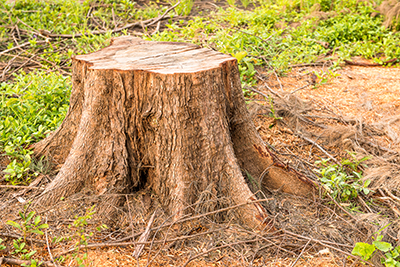
Your business is booming. You’ve taken care of every aspect of it—from customer service to human resources. Things are going well. But you’ve forgotten about that enormous tree on your property, or that unsightly tree stump. At first glance, you don’t think it poses any kind of problem, so you don’t make an effort to remove it.
If you continue to ignore it, the cost will be far greater than the cost to have it removed.
Root Damage
Roots can be very powerful, whether they’re big or small. Roots are always searching for water sources and nutrients, stretching far and wide to reach them. If you have loose soil in the ground, these roots will cut through the ground even faster.
Structural Damage
Despite popular belief, tree roots aren’t responsible for damaging your building’s foundation. It’s a process—including the condition of the soil—that leads to damage. For example, if you see cracks in the concrete on your property, these can be caused by overgrown roots. Concrete settling is not only unattractive, but it can be dangerous, because as concrete shifts and settles, it can negatively impact the structure of your building. The older your building, the more vulnerable it is to structural damage.
Damage to Underground Pipes
Unchecked tree roots can break pipes, or more commonly, cause blockages in already damaged pipes. What will happen is a joint will crack in an older pipe, and roots will grow through the crack, causing blockage. A cracked pipe is a very welcoming environment for invading roots because it offers moisture, oxygen and nutrients that the roots need to grow even more rapidly.
If a root blocks a sewer pipe, it can be very costly to clear out. This is why mechanical routing is recommended annually, so you can prevent such a problem before it’s out of control. Also, it’s a good idea to replace old joints with more modern ones and materials to support them as a means of prevention as well.
Which Trees are Good for Your Property?
If you’d like to have trees on your property, which ones should you choose? If you’d like to avoid the hassles of potential root damage, consider going with a slower-growing species of tree that has less aggressive root growth. Try oak or sugar maple trees that grow slowly, and stay away from trees such as elm, silver maples and willows.
Why Remove a Tree Stump?
Depending on your business, if you have customers coming to your property, a stump is definitely unappealing. It shows that you aren’t as meticulous about your landscaping as you should be, making potential customers wonder what else you may not be as meticulous about. When attention to detail is important, an ugly stump is a warning sign that you may overlook details. In addition, they can cause a customer to trip or some other injury on your property, and you could be faced with a lawsuit.
Last but not least, tree stumps attract insects that bore into the wood. The infestation may eventually move from your yard to your building structure. So don’t wait until the problem is out of hand before taking action.
VacTone Environmental Services provides root removal and other services to help protect you from unnecessary damage to your business. Serving Massachusetts and southern New Hampshire. Contact us today!
